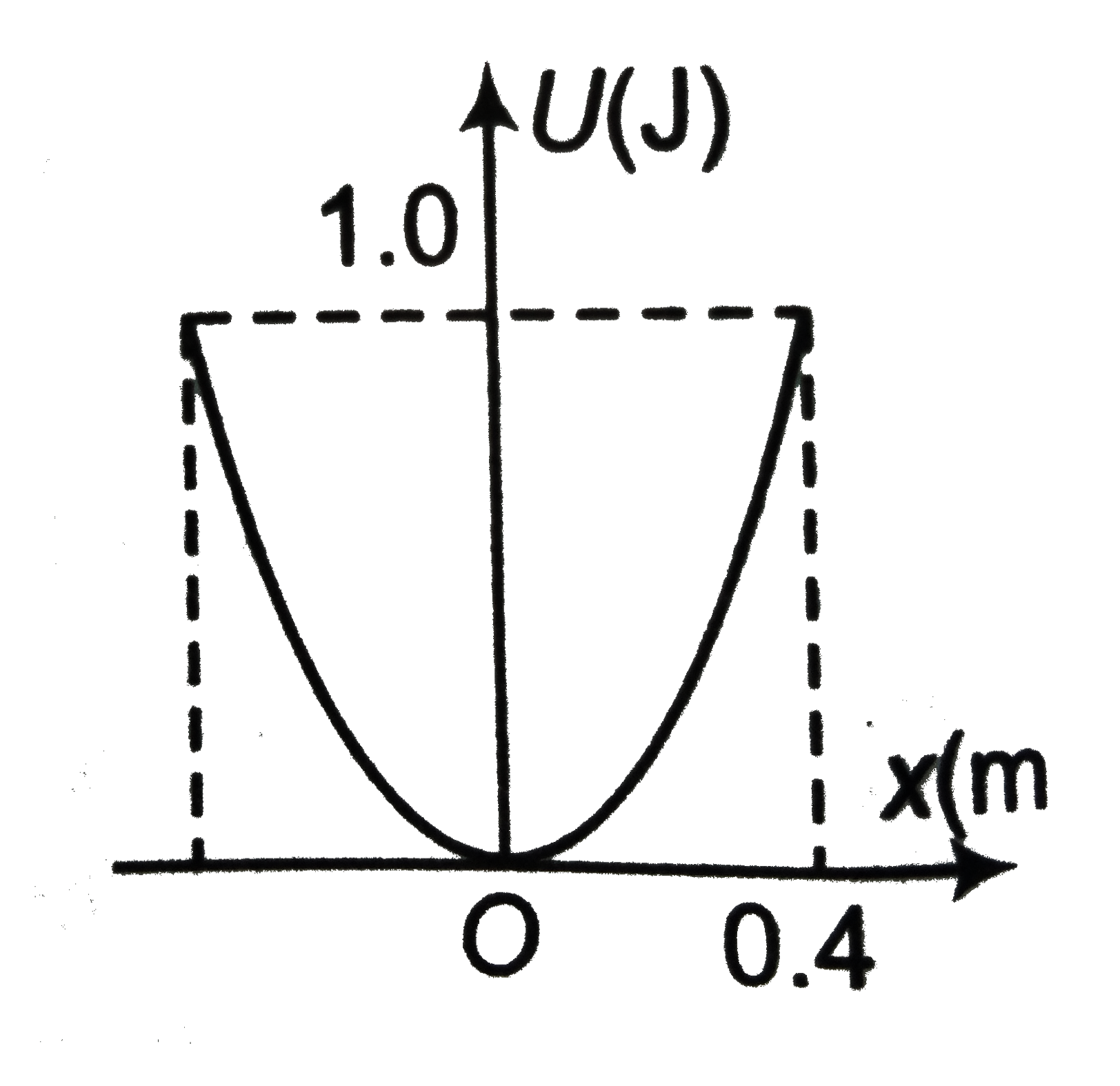The time period of a particle in simple harmonic motion is T. Assume potential energy at mean position to be zero. After a time of T6 it passes its mean position its,
velocity will be half its maximum velocity
displacement will be half its amplitude
acceleration will be nearly 86% of its maximum
KE=PE
The correct Answer is:A, C
y=asinωt=asin(2πtT)
v=dydt=ωacos(2πtT)
At t=T6,v=ωacos((2πTT6))=12ωa
or, v=(vmax2)
y=asin(2πT)×T6=asin(π)3
It is not half of a.
acceleration =d2ydt2=dvdt=ω2asin(2πtT)
=ω2asin(π3)=0.86(AC)max
At this instant,
KE=12mv2=12m(vmax2)2=(KE)max4=14(TE)
PE=TE−KE=34(TE)
i.e., KE≠PE
Topper's Solved these Questions
- LINEAR AND ANGULAR SIMPLE HARMONIC MOTIONBOOK - CENGAGE PHYSICSCHAPTER - LINEAR AND ANGULAR SIMPLE HARMONIC MOTIONEXERCISE - Assertion Reasoning
6 Videos
- LINEAR AND ANGULAR SIMPLE HARMONIC MOTIONBOOK - CENGAGE PHYSICSCHAPTER - LINEAR AND ANGULAR SIMPLE HARMONIC MOTIONEXERCISE - Comprehension
33 Videos
- LINEAR AND ANGULAR SIMPLE HARMONIC MOTIONBOOK - CENGAGE PHYSICSCHAPTER - LINEAR AND ANGULAR SIMPLE HARMONIC MOTIONEXERCISE - Single Correct
107 Videos
- KINETIC THEORY OF GASES AND FIRST LAW OF THERMODYNAMICSBOOK - CENGAGE PHYSICSCHAPTER - KINETIC THEORY OF GASES AND FIRST LAW OF THERMODYNAMICSEXERCISE - Interger
11 Videos
- MISCELLANEOUS KINEMATICSBOOK - CENGAGE PHYSICSCHAPTER - MISCELLANEOUS KINEMATICSEXERCISE - Interger type
3 Videos
Similar Questions
A particle is executing simple harmonic motion with amplitude A. When the ratio of its kinetic energy to the potential energy is 14 , its displacement from its mean position is
View SolutionThe time period of a particle executing SHM is T. After a time T/6 after it passes its mean position, then att=0 its :
View Solution
Knowledge Check
The velocity of a particle in simple harmonic motion at displacement y from mean position is
Aω√a2+y2Bω√a2−y2CωyDω2√a2−y2The velocity of a particle performing simple harmonic motion, when it passes through its mean position i
AInfinityBZeroCMinimumDMaximumThe periodic time of a particle doing simple harmonic motion is 4 second . The time taken by it to go from its mean position to half the maximum displacement (amplitude) is
A2sB1sC23sD13s
A particle of mass 2kg moves in simple harmonic motion and its potential energy U varies with position x as shown. The period of oscillation of the particle is

View SolutionThe period of a simple harmonic oscillator is 2 s. If it crosses mean position at an instant. The time after which its displacement from the mean position will be half of the amplitude is.
View SolutionThe total energy of a harmonic oscillator of mass 2 kg is 9 J. If its potential energy at mean position is 5 J , its KE at the mean position will be
View SolutionA particle is executing simple harmonic motion with an angular at a 4cm. At the mean position the velocity of the particle is 10cm/sec .The particle from the mean position when its speed becomes 2cm/s is
View SolutionA particle undergoes simple harmonic motion having time period T. The time taken in 3/8th oscillation is
View Solution
